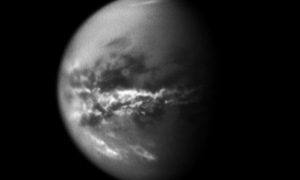JFK 50 jaar later

‘Today marks the 50th anniversary of President Kennedy’s”Address at Rice University on the Nation’s Space Effort,” when theyoung president shifted our efforts in space from low to high gear.In proclaiming, “We choose to go to the moon,” Kennedy propelledour space program to the forefront of American culture andconsciousness, galvanizing an historic effort on which we continueto build today.
Accomplishing Kennedy’s goals, both tangible and intangible, wehave taken on his vision to create new challenges and nowreach toward new capabilities and destinations. Neil Armstrongfirst left humanity’s footprint on the moon, and more importantlyhelped raise the “banner of freedom and peace,” fulfillingKennedy’s vow to “not see [space] governed by a hostile flag ofconquest.”
And we now stand on Armstrong’s shoulders to create asustainable vision for the future exploration of space. Much likethose aboard the Apollo 7, 8, 9, and 10 missions cleared the pathfor Apollo 11 and Armstrong to land on the moon, our Curiosityrover on Mars is clearing the path for humans – Americans – to landon Mars. Our space program has developed new technologies that madehuman expansion into the solar system a reality. It created aglobal enterprise, now spinning off into the private sector, whichcontinues to advance our nation and our world.
We realize now as we did then that we are not just on a missionto discover the universe; we are on a mission to discoverourselves. As astronaut Bill Anders, one of the first three humansto see the far side of the moon, put it, “We came all this way toexplore the moon, and the most important thing is that wediscovered the Earth.” We cannot forget that the purpose of spaceexploration is to make life on Earth better, even as we “increaseour knowledge and unfold our ignorance,” as Kennedy said, and as wecontinuously raise the bar of human achievement.
As Kennedy hoped for greater achievements in science andeducation, in culture, and for peace, he could not have foreseenthe degree to which we have unfolded our ignorance. He envisioned”new techniques of learning and mapping and observation, by newtools and computers for industry, medicine, the home as well as theschool.”
There are literally thousands of examples of explorationtechnology being adapted for life on Earth, and a few areas wherewe have surpassed Kennedy’s greatest dreams: artificial hearts;retrofit systems that convert gas-powered vehicles intogas-electric hybrids, used in such trucks as mail delivery trucksfor the U.S. Postal Service; health and fitness monitoringtechnology capable of measuring and recording vital signs ofsoldiers, first responders, professional athletes, and consumersseeking to get in shape; and parachutes capable of rescuing entireplanes.
Our fleet of Earth observation satellites track hurricanes andwildfires and are able to analyze landslide motion and keep watchon agricultural fields. They provide continuity of data over thelong term to help us see how our planet continues to change as aunified system. Our research on the International Space Station hashelped us understand processes such as bone and muscle lossespecially applicable to our senior citizens.
All this innovation has saved countless lives and billions ofdollars, all the while creating thousands of jobs.
And we continue to reach higher. We have opened a new door tocommercial space, for instance, helping facilitate a new spacetransportation industry to low Earth orbit.
Today, to “organize and measure the best of our energies andskills,” as Kennedy charged us, we’re doing things like landingthat small SUV-size rover on Mars, now transmitting high definitionimages and information, which will lead to a better understandingof the Martian environment and the different ways Mars and Earthevolved. By 2018 we will launch our new James Webb Space Telescope,which will serve as our eye in the sky, peering deeper into theuniverse than ever before.
We’re building our Space Launch System, the most powerful rocketin history, and Orion, the new multi-purpose vehicle crew capsule,which will lead to the first-ever crewed missions beyond the lowEarth orbit and the Moon into deep space. President Obama chargedus with increasingly difficult challenges, beginning with sendingastronauts to an asteroid by 2025 and Mars by the mid-2030s. Thejourney there will be full of discoveries and new technologicalbreakthroughs.
So while President Kennedy christened our sails on the new seaof space exploration, our work is far from done. Thanks toPresident Obama, this generation’s young president, we arewitnessing a christening of a rejuvenated space program, where wewill traverse previously untouched terrain, learning from our pastand building on it to forge a bright future.’
Meest Gelezen
Vrouwen houden universiteit draaiende, maar krijgen daarvoor geen waardering
Hbo-docent wil wel rolmodel zijn, maar niet eigen moreel kompas opdringen
Wederom intimidatie van journalisten door universiteit, nu in Delft
‘Waarom het nu niet lukt om medezeggenschap in hbo te versterken’
‘Sluijsmans et al. slaan de plank volledig mis’
